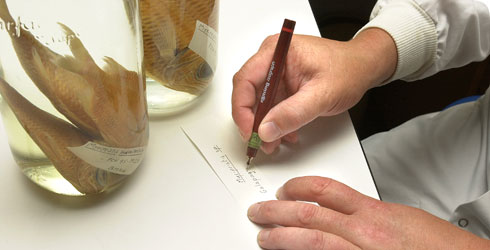Our curators
Every year, thousands of specimens are added to our collections. Today, the Museum still acquires most of its specimens through collecting expeditions. Not surprisingly, the methods have changed significantly since the days of the Victorians, who often travelled alone collecting all manner of weird and wonderful organisms and objects. Nowadays, collecting is more focussed. It is typically associated with research projects, and collaboration between international researchers is of essential value.
Once the specimens have arrived at the Museum, they need to be prepared and labelled by curators, ready for identification. But the majority of a curator's time is spent maintaining and documenting the Museum's existing collections. Many of the specimens are fragile and need to be handled as little as possible, whereas others are unstable and sensitive to changing light and moisture conditions. There is also the problem of attack from insects, mould and rodents. Curators work vigilantly to protect against all these symptoms and foes, while continually gathering new information about the specimens and making this information available to the world.
Toolbox
Follow the Curator of Diptera's blog

What happens behind the scenes in the Museum's Life Sciences Department? Curator Erica McAlister has about 30,000 species of fly to look after, and fieldwork trips at home and abroad. Her life is never dull!
Follow the blog